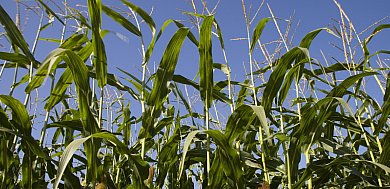WASHINGTON — Enrollment for the 2009 Direct and Counter-cyclical Payment (DCP) Program for farms with base acres will continue until June 1, 2009, online and at local USDA service centers.
USDA computes DCP Program payments using base acres and payment yields established for each farm. Eligible producers receive direct payments at rates established by statute regardless of market prices.
For 2009, eligible producers may request to receive advance direct payments based on 22 percent of the direct payment for each commodity associated with the farm. Advance direct payments were available as of December 2008.
Payment rates
Counter-cyclical payment rates vary depending on market prices. Counter-cyclical payments are issued only when the effective price for a commodity is below its target price.
The effective price for each covered commodity and peanuts equals the direct payment rate plus the higher of the national average market price received by farmers during the 12-month marketing year or the national average loan rate.
ACRE enrollment
Producers who are eligible for the DCP Program will also be eligible to enroll in the Average Crop Revenue Election (ACRE) Program. The enrollment period for the ACRE Program will begin in the spring.
Producers may first enroll in the DCP Program, elect to receive advance direct payments and then later modify their enrollment to include the ACRE program or they may wait and elect to enroll in DCP and ACRE at the same time.
Optional
The optional ACRE program provides a safety net based on state revenue losses and acts in place of the price-based safety net of counter-cyclical payments under DCP.
A farm’s payment is based on a revenue guarantee calculated using a five-year average state yield and the most recent two-year national price for each eligible commodity.
For the 2009 crop, the two-year price average will be based on the 2007 and 2008 crop years.
An ACRE payment is issued when both the state and the farm have incurred a revenue loss.
The payment is based on 83.3 percent (85 percent in 2012) of the farm’s planted acres times the difference between the state ACRE guarantee and the state revenue times the ratio of the farm’s yield divided by the state expected yield.
The total number of planted acres for which a producer may receive ACRE payments may not exceed the total base on the farm.
In exchange for participating in ACRE, in addition to not receiving counter-cyclical payments, a farm’s direct payment is reduced by 20 percent, and marketing assistance loan rates are reduced by 30 percent.
Be sure before signing
The decision to enroll in the ACRE Program is irrevocable. The owner of the farm and all producers on the farm must agree to enroll in ACRE. Once enrolled, the farm will be enrolled for that initial crop year and will remain in ACRE through the 2012 crop year.
Related article:
Read “Is farm bill’s ACRE program for you,” in which Ohio State University ag economist Carl Zulauf highlights farmers’ options.











